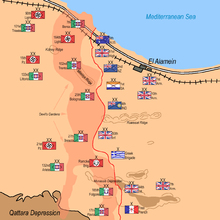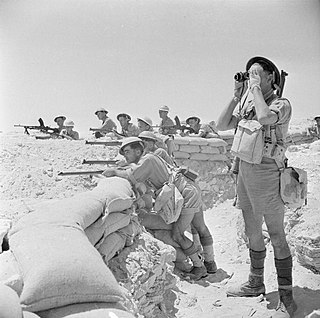
The First Battle of El Alamein was a battle of the Western Desert campaign of World War II, fought in Egypt between Axis forces of the Panzer Army Africa—which included the Afrika Korps under Field Marshal Erwin Rommel—and Allied forces of the Eighth Army under General Claude Auchinleck.

The Second Battle of El Alamein was a battle of the Second World War that took place near the Egyptian railway halt of El Alamein. The First Battle of El Alamein and the Battle of Alam el Halfa had prevented the Axis from advancing further into Egypt.

The 2nd New Zealand Division, initially the New Zealand Division, was an infantry division of the New Zealand Military Forces during the Second World War. The division was commanded for most of its existence by Lieutenant-General Bernard C. Freyberg. It fought in Greece, Crete, the Western Desert and Italy. In the Western Desert Campaign, the division played a prominent role in the defeat of German and Italian forces in the Second Battle of El Alamein and the British Eighth Army's advance to Tunisia.

The Battle of Alam el Halfa took place between 30 August and 5 September 1942 south of El Alamein during the Western Desert Campaign of the Second World War. Panzerarmee Afrika, attempted an envelopment of the British Eighth Army. In Unternehmen Brandung, the last big Axis offensive of the Western Desert Campaign, Rommel intended to defeat the Eighth Army before Allied reinforcements arrived.

The Battle of Gazala, also the Gazala Offensive was fought near the village of Gazala during the Western Desert Campaign of the Second World War, west of the port of Tobruk in Libya, from 26 May to 21 June 1942. Axis troops of the Panzerarmee Afrika consisting of German and Italian units fought the British Eighth Army composed mainly of British Commonwealth, Indian and Free French troops.
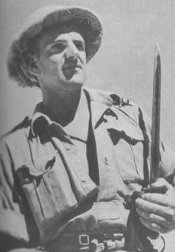
Keith Elliott, VC was a New Zealand soldier who served with the New Zealand Military Forces during the Second World War. He was awarded the Victoria Cross, the highest award for gallantry in the face of the enemy that can be awarded to British and Commonwealth forces, for his actions in the First Battle of El Alamein.

The 132nd Armored Division "Ariete" was an armored division of the Royal Italian Army during World War II. It was formed in 1939 as the second armored division after the 131st Armored Division "Centauro". The division fought in the Western Desert Campaign until being destroyed during the Second Battle of El Alamein and declared lost due to wartime events on 8 December 1942.

The 9th Queen's Royal Lancers was a cavalry regiment of the British Army, first raised in 1715. It saw service for three centuries, including the First and Second World Wars. The regiment survived the immediate post-war reduction in forces, but was amalgamated with the 12th Royal Lancers to form the 9th/12th Royal Lancers in 1960.
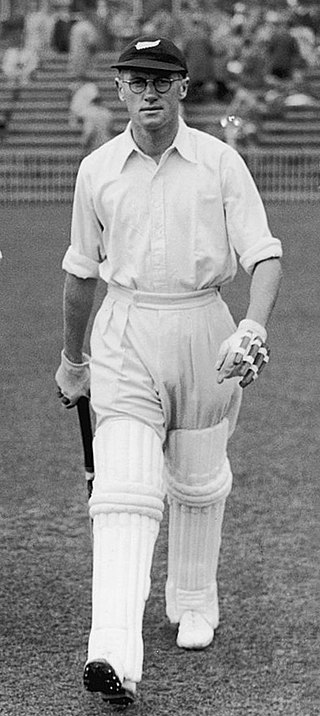
Denis Andrew Robert "Sonny" Moloney was a New Zealand cricketer who played three Test matches on New Zealand's 1937 tour of England. He died of his wounds after being captured at the First Battle of El Alamein during the Second World War.

Lieutenant General Sir Harold Rawdon Briggs, was a senior British Indian Army officer, active during the First World War, Second World War and the Malayan Emergency.

Lieutenant General Sir Dudley Russell KBE, CB, DSO, MC was a senior officer of both the British Army and the British Indian Army, and served during World War I and World War II, where he commanded the 8th Indian Infantry Division during the Italian Campaign from late 1943 until the end of the war in 1945.

The 27th Infantry Division "Brescia" was an infantry division of the Royal Italian Army during World War II. The Brescia was named after the city of Brescia in Lombardy. The Brescia was classified as an auto-transportable division, meaning it had some motorized transport, but not enough to move the entire division at once.
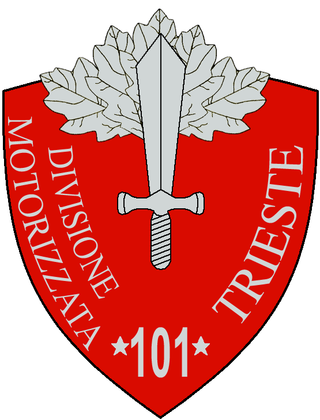
101st Motorized Division "Trieste" was a motorized infantry division of the Royal Italian Army during World War II. The Trieste was formed in 1939 and named for the city of Trieste. The division and its infantry and artillery regiments were based in Piacenza, while the 9th Bersaglieri Regiment was based until 1940 in Treviso and then moved to Cremona to be closer to the division. In September 1941 the Trieste was transferred to Libya for the Western Desert Campaign. The division was decimated in the Second Battle of El Alamein, but was rebuilt with the survivors of destroyed divisions. The Trieste then participated in the Tunisian Campaign until Axis forces in Tunisia surrendered to allied forces on 13 May 1943.

The 25th Infantry Division "Bologna" was an infantry division of the Royal Italian Army during World War II. The Bologna was named after the city of Bologna and classified as an auto-transportable division, meaning it had some motorized transport, but not enough to move the entire division at once.

The 17th Infantry Division "Pavia" was an infantry division of the Royal Italian Army during World War II. The Pavia was formed in on 27 April 1939 and named after the city of Pavia. The Pavia was classified as an auto-transportable division, meaning it had some motorized transport, but not enough to move the entire division at once. The Pavia had its recruiting area and regimental depots in the Romagna and its headquarters in Ravenna. Its two infantry regiments were based in Cesena (27th) and Ravenna (28th), with the division's artillery regiment based in Ravenna. Shortly after its formation the division was sent to Sabratha in Italian Libya. It participated in the Western Desert campaign and was destroyed during the Second Battle of El Alamein.

133rd Armored Division "Littorio" was an armored division of the Royal Italian Army during World War II. The division's name derives from the fasces carried by the lictors of ancient Rome, which Benito Mussolini had adopted as symbol of state-power of the fascist regime. Sent to North Africa in January 1942 for the Western Desert Campaign the division was destroyed in the Second battle of El Alamein in November 1942.
The 18th Indian Infantry Brigade was an infantry brigade formation of the Indian Army during World War II. It was formed in October, 1940 at Meerut in India and assigned to the 8th Indian Infantry Division. It was then detached for independent duties in Abadan in Persia. In late June 1942 the 18th Brigade, having been rushed over to North Africa from Mosul, Iraq, was posted to defend a position with only two to four days to prepare. They were overrun by Erwin Rommel's tanks at Deir el Shein in front of the Ruweisat Ridge on 1st July 1942. In the process, however, they gained valuable time for the rest of the British Eighth Army to organise the defences for what was to be known as the First Battle of El Alamein, halting Rommel's advance towards Egypt.

The 132nd Tank Regiment is a tank regiment of the Italian Army based in Cordenons in Friuli-Venezia Giulia. The regiment is equipped with Ariete main battle tanks and assigned to the 132nd Armored Brigade "Ariete". The 132nd Tank Infantry Regiment was formed in June 1941 by the Royal Italian Army and assigned to the 132nd Armored Division "Ariete", which was fighting in the Western Desert campaign in Libya and Egypt. In September 1941, the regiment arrived at the front and in November and December 1941 the regiment fought in Operation Crusader. In 1942 the regiment fought in the Battle of Gazala, Battle of Bir Hakeim, First Battle of El Alamein, Battle of Alam el Halfa, and Second Battle of El Alamein. During the latter battle the regiment was destroyed. For its conduct in North Africa the regiment was awarded Italy's highest military honor the Gold Medal of Military Valor.
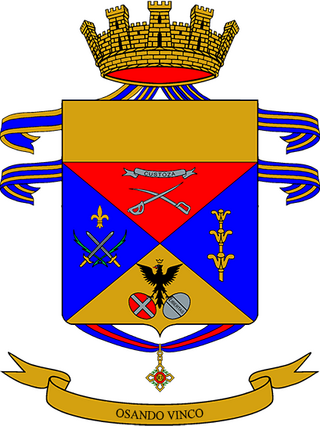
The 66th Airmobile Infantry Regiment "Trieste" is an active unit of the Italian Army based in Forlì in the Emilia-Romagna and the Italian Army's only airmobile infantry unit. Formed in 1862 and originally named for the Valtellina valley the regiment is named since 1939 for the city of Trieste. The regiment is part of the Italian Army's infantry arm and assigned to the Airmobile Brigade "Friuli".
